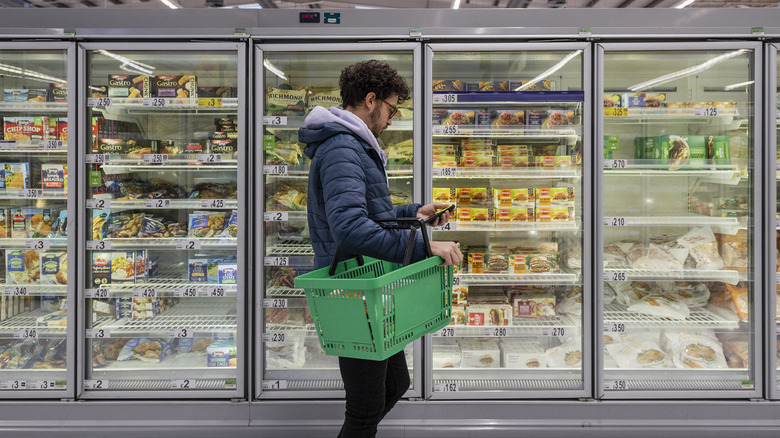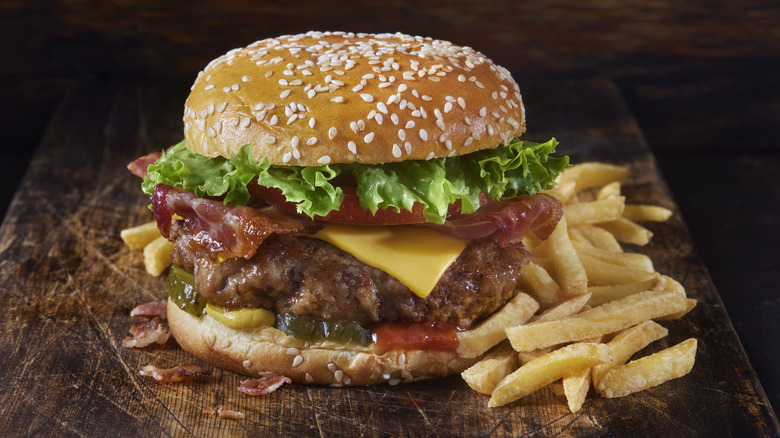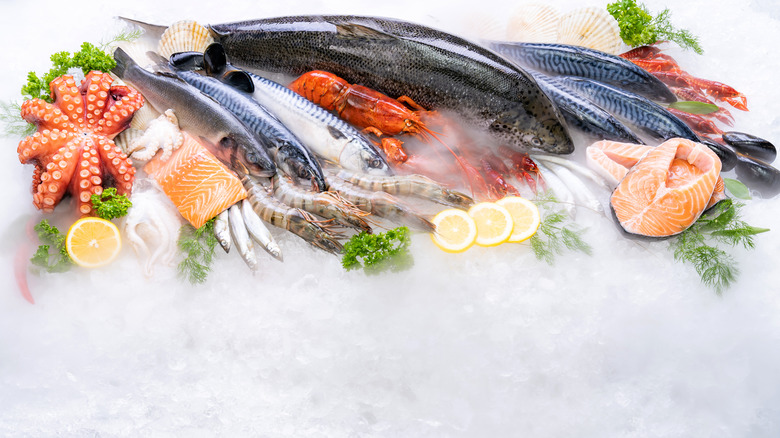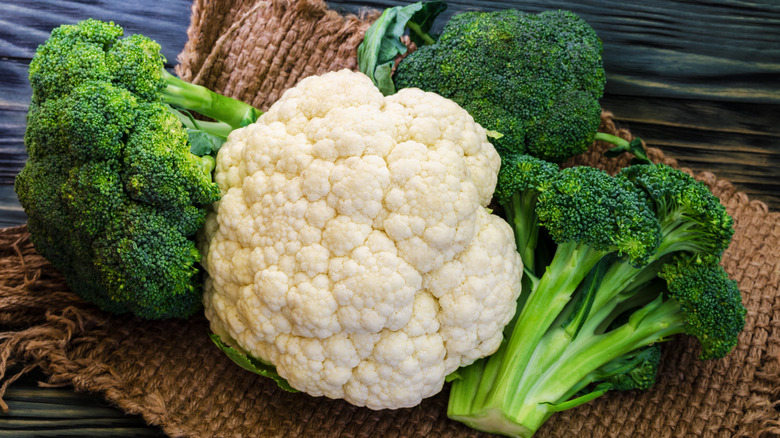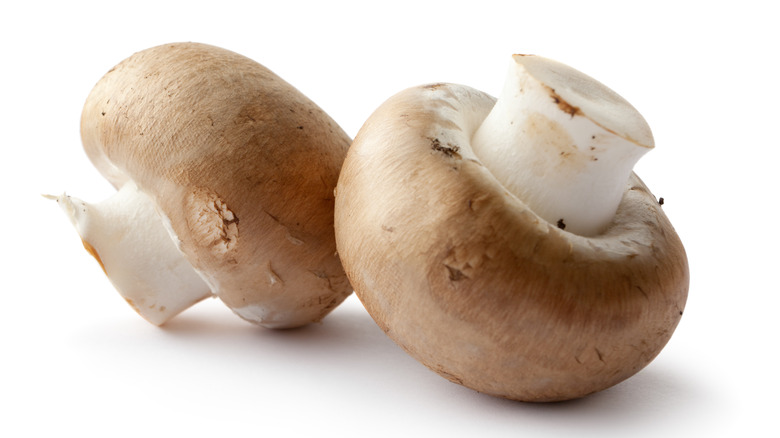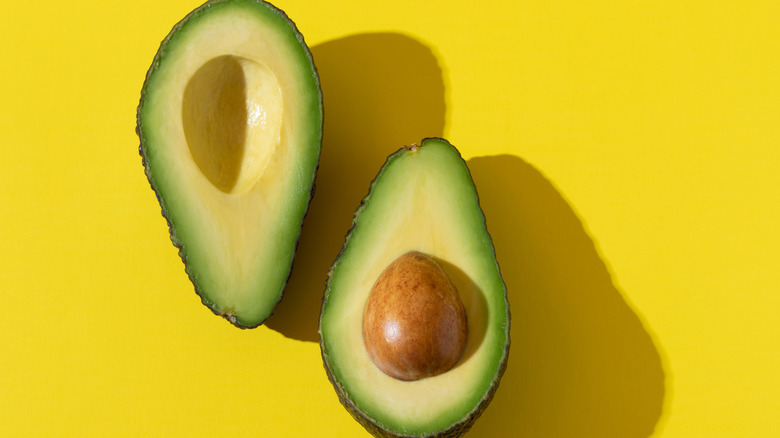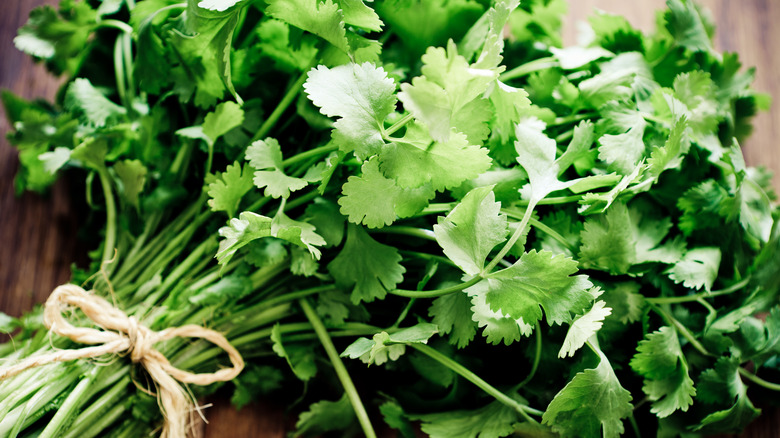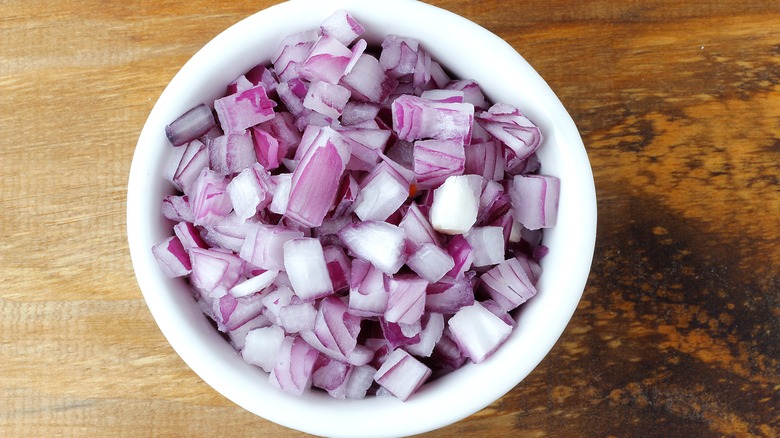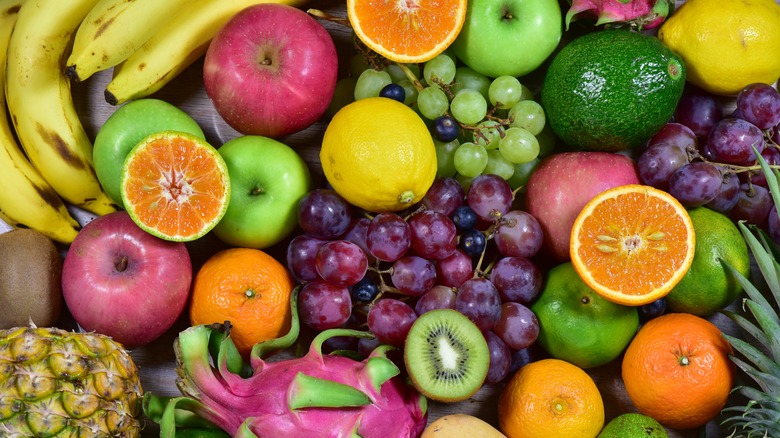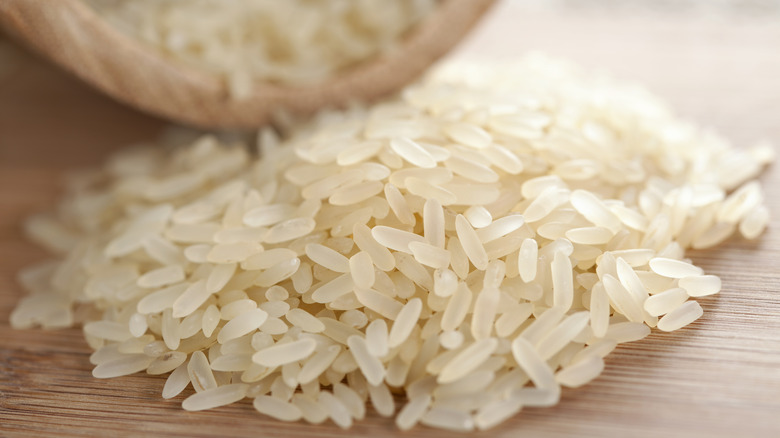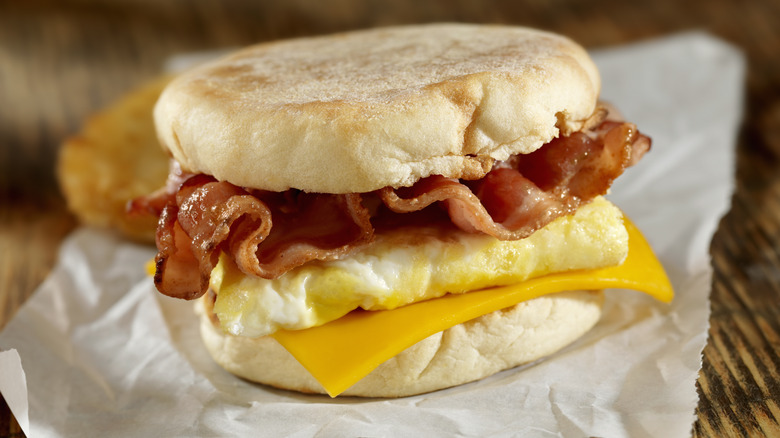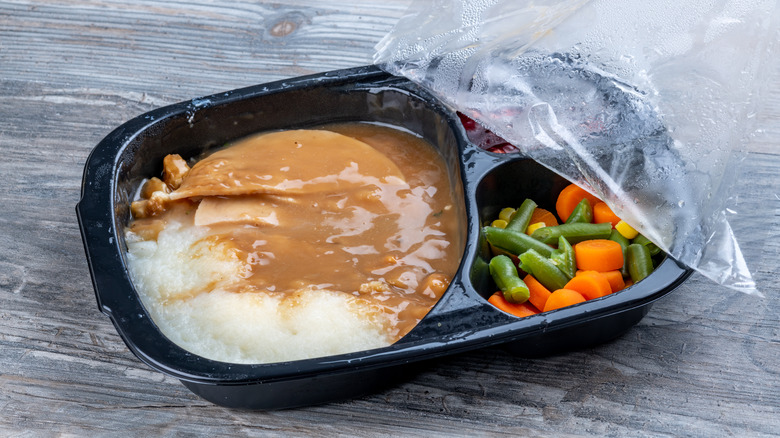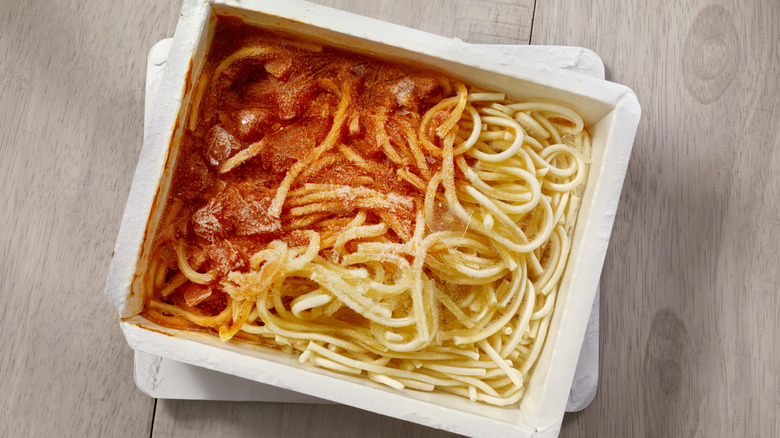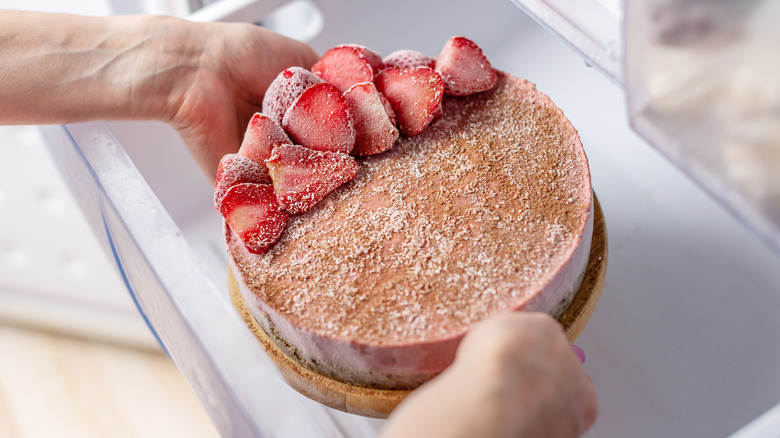13 Frozen Foods That Aren't Worth Buying
Grocery prices are only going up, which can put a strain on our wallets. Even if we get good deals on fresh food, we might not use it all up in time, and this means lots of money wasted and ingredients dumped in the trash. If you're tired of all this waste, then you might've turned to frozen foods, especially if you're trying to stay away from canned products and processed junk food.
These icy packs are super convenient, allowing you to have an array of ingredients at your disposal. You don't have to worry about them going bad within a few days, as frozen foods can last for months, or even years! However, some things keep better than others, and ultimately, you might be paying more for these products too. As the person responsible for groceries and cooking in my household, I've figured out which ingredients are worth grabbing from the freezer and which aren't. Here are my top picks for the things you should give a miss.
1. Hamburgers
A nice, juicy burger can really hit the spot when you're craving something hearty and flavorful, but having good quality ground beef on hand isn't always doable. And if you're like me, you might've bought a couple of pounds of ground beef, intending to craft perfectly thick burgers out of them, only to throw out the rancid pack.
The idea of frozen hamburgers may sound ideal. After all, when you have a hankering for a copycat McDonald's burger, you want it pronto! But the fact is, frozen patties often look and feel like a hockey puck. They're not too flavorful, and you have to thaw them out to cook anyway, so you might as well buy fresh patties or make them yourself.
Some brands even sell entire pre-frozen hamburgers, buns included. I know they're tempting to get for convenience's sake, but truth be told, they're awful. The buns can become soggy or even hard when you microwave them, depending on the power and time. So I'd skip those and still make your burgers from fresh ground beef and just-baked buns.
2. Seafood
Not only is seafood delicious, but it's also healthier than meat, so it's understandable why you'd want to eat more of it. Admittedly, most seafood is luxurious and can be a splurge to buy, meaning it's rare that seafood makes it onto your dinner plates. Plus, the times you do buy it, you might've left it in the fridge for a bit too long, risking the need to throw out choice fish filets since they're smelling a bit suspect.
Cutting down on waste with frozen fish is a good idea, as most cuts are okay when cooked and they're much cheaper. The exception is salmon, as a few brands might go off-color, as well as be tasteless and tough. Other frozen seafood like clams, squid, and shrimp aren't as great either. If you want them to be the star of the show, you'll be disappointed. Once cooked, they lack taste and texture, so you might as well spend a little more on fresh seafood that'll make your dishes burst with flavor.
3. Broccoli and cauliflower
Vegetables are one of the worst offenders when it comes to rotting in the fridge. You buy a fresh bag of veggies, and before you know it, it smells absolutely foul. Even worse is that when you pull the bag out, it's soggy and gross, making you swear off fresh greens for life.
The obvious solution here is to go canned or frozen. Because canned vegetables may sometimes swim around in questionable liquids, you might think that frozen's the way to go — and in many cases, they're fantastic. Peas, and carrots taste just fine when you throw them into your meals, and frozen corn can be even sweeter than the fresh version. However, broccoli and cauliflower are an entirely different story.
These veggies already start out delicate and soft, plus they're pre-cooked before freezing. Once you cook them, they become mushy and bland. This makes them only good for things like cream of broccoli soup, or anything else that's blended. Otherwise, you're better off sticking with fresh broccoli and cauliflower. If you're low on time and/or energy, you can spend a little extra on pre-cut bags.
4. Mushrooms
If you don't frequently cook meals at home, then fresh mushrooms can be hit or miss. They may seem perfect when you leave the market, but they can swiftly turn mushy and gross overnight. Although you can keep mushrooms in a paper bag to keep them from going slimy, you still might not use them up fast enough to save them from their fate in the trash can.
I hate to disappoint you, but frozen mushrooms aren't the answer — at least not if you want to eat them in any form but blended/puréed. They get really soft and release lots of water while cooking. In addition, when you bite into them, they have a chewy texture and are almost tasteless. Like with frozen broccoli and cauliflower, you should only put frozen mushrooms into soups since you can blend them up. If you want to have sliced mushrooms on hand but don't use them often, then a better alternative is canned or jarred mushrooms.
5. Avocados
Avocados are the worst when it comes to keeping them fresh and beautiful. Keeping them in their skins and cutting into them at the last minute definitely helps, but chances are, you've had your fair share of mushy, rotting avocados (I certainly have!). So imagine my surprise when I found out that grocery stores have frozen avocado chunks!
Don't get too excited though, because they're an utter disappointment. When defrosted, they become squishy and almost sour-tasting, and it's really noticeable if you eat the avocado pieces on their own. I've noticed citric acid listed in the ingredients (as a preservative), so that's probably why. Because they're not outstanding in their fleshy form, you should avoid using frozen avocados solo. Instead, you can blend them up for healthy smoothies, mash them up by using a classic fresh guacamole recipe, or add other toppings to make the slices more palatable for avocado toast.
6. Cilantro
Cilantro's a versatile herb that's used in cuisines across the world, so with one bunch, your taste buds will be in Asia one night and in Mexico the next. Despite its utility, cilantro may be a neglected herb in your fridge, and you might find yourself with a sad, yellowing, and wilting bunch. Since herbs go bad so quickly, a small box in your freezer might sound like a godsend when you want to make a recipe that calls for 1 tablespoon of chopped cilantro and you don't want to buy a whole bunch (literally).
Admittedly, this product came in handy when I wanted a dash of additional flavor in my dishes. However, the small flakes do tend to clump up, so if you don't stir carefully, you'll either get a full bite of cilantro or none at all. Also, if you look carefully at the unit price, you'll get quite the shock. You'd think that it's worth its weight in gold, which it's not! Unless you have a generous food budget, or you tend to forget about things in your refrigerator, then it's a wiser choice to pre-plan your meals and use up a cilantro bunch completely within a few days.
7. Diced onions
Dicing onions isn't a pleasant task — I always end up crying up a storm, which is annoying since I can't see anything I'm doing. There's a refrigerator hack and other tips to make cutting onions less painful, but let's face it, it's still an annoying task. This is why I was so delighted to find frozen diced onions in the grocery store, as I wouldn't have to suffer anymore.
Once again, I'm sorry to say that for the most part, this product won't hack it in the kitchen. Yes, it's super convenient since you can throw it right onto your dishes or into the pan while cooking, but the pungency is really lacking here. Plus, they're not crunchy anymore, meaning you can't use them raw. If you're making meals that are slow-cooked or you're using a skillet to make perfectly caramelized onions, though, then this product will suffice. You'll get to skip the labor and the tears too.
8. Fruit
It can be challenging to deal with fresh fruit. Ideally, you'd buy the pieces while they're unripe, wait for them to ripen up, and then have amazingly juicy and sweet bites of your favorite fruits. However, that's rarely the reality — instead, it can feel like you're watching the pieces carefully, only for them to go from unripe to a squishy mess overnight.
You may have been eyeing those bags of frozen fruit when you go shopping because of this, but tread with caution. If you want to buy them solely because you want to pop fruit pieces into your mouth, then it's a no-go. In many cases, the fruit's underripe, so it's more sour than sweet. And like many other things on this list, the fruit can be softer than when they're fresh, and that's not always a desirable texture. However, if you want to use the fruit in other recipes such as baked goods or smoothies, then I'd say that frozen's worth buying.
9. Rice
Rice can take a while to cook, and sometimes, you want it right then and there. Or maybe you have a complicated dinner planned out, and checking rice duties off the list would help immensely. Either way, frozen rice from the store sounds excellent, especially since you can plate up everything easily. But from my experience, this product is extremely expensive, so I'd only use it as an emergency side dish rather than a regular on your meal plans. In addition, the texture can be weird after you heat it up.
A more affordable option is to buy the individual portions of microwavable rice. These are easy to throw into the microwave for a few minutes, resulting in fluffy rice on the table at a moment's notice. To save even more money, you can pre-cook your own rice, cool it down, and then freeze your own portions. Just make sure you cool it down all the way before freezing, or else it'll be gummy when you defrost it to eat.
10. Breakfast sandwiches
Have you just woken up, dreaming about a McDonald's Bacon and Egg McMuffin? You don't want to throw on clothes to drive out though, nor do you want to pay extra for someone to deliver breakfast to you. Luckily for you, there are frozen dupes you can keep in the freezer for times like these. Simply grab one, nuke it for a few minutes, and you'll have something just as tasty. Or that's the idea, anyway.
The reality is more like this — as soon as you take a bite, you know something's wrong. Everything's rubbery and chewy, making it hard to swallow. And while a box of these dupes does cost less than a trip out to McDonald's, it's still more expensive than making your own. Another thing is if you take a closer look at the packaging, these sandwiches are chock full of sodium and preservatives. Fresh sandwiches don't take long to make, and you can control the ingredients that go into them. Not only can you save money, but you can eat healthier and switch things up whenever you want as well.
11. Pre-made meals
After a long day at the office, the last thing you want to do is cook a complicated meal. All you want is to kick back with a cold drink and hot meal while catching up on your favorite TV shows. Naturally, this means you should have TV dinners! Take one out from the neat stack in your freezer, poke a few holes in the plastic covering, and pop it in the microwave for 5 minutes. By the time you've changed out of your work clothes and into your PJs, there's a piping hot meal waiting for you.
This is all well and good, but take one look at the pre-made meals, and you'll see that they're tiny. You'll probably have to have a few to get full, which won't be great on your wallet. Not to mention, they're high in sodium, which will have your blood pressure skyrocketing in no time. It's better if you save these as snacks, once-in-a-while treats, or emergency meals. It's easy to prep your own DIY TV dinners to be kinder to your bank account and body. Or get a slow cooker so ingredients can simmer and be ready for you to eat by the time you get home.
12. Pasta meals
If you have a large family to feed, or you just have a humongous appetite, then frozen pasta meals may be extremely appealing. They're large, full of carbs, and provide a hearty meal without slaving away at the kitchen. Slapping a tray of warm spaghetti onto the dinner table will surely please everyone's tummies, especially if you pair it with some crispy garlic bread.
Unfortunately, I recommend that you pass on this one. Once pasta's cooked, freezing and reheating it will give it a strange texture, and it won't be pleasant to chew on. And like many pre-made foods, frozen pasta can be high in sodium and fat, so it shouldn't be something you eat often.
Do yourself a favor and pick up a pack of pasta and a jar of sauce. This shouldn't cost much, and it won't take a long time to cook either. Including the time it takes to boil water and shred cheese (which you can buy pre-packaged too), you'll have a meal on the table in under 15 minutes. It's so easy that even the kids can help with cooking!
13. Desserts
Baking is one of the hardest things to do in the kitchen — it's an exact science, and there are so many ingredients you need to buy and mix, it can be a headache to tackle. Plus, it can be time-consuming, and you don't have the time for that. Maybe baking's not your favorite activity, but you do enjoy a good dessert, so when you see the frozen aisle packed with goodies, you'll probably do a little dance like I've done.
Well, most frozen desserts (besides ice cream and popsicles) I've tried have been a letdown, especially the cakes. After freezing and thawing, they can taste quite plain, and for some, the texture can become like cardboard. Also, depending on the brand you choose, the products can be stuffed with preservatives and artificial flavoring too. So the next time you crave a nice cake to go with your tea or coffee, spend a little extra at your local bakery to get something worthy of your taste buds.
14. Methodology
For all of my adult life, I've been the person responsible for both buying groceries and cooking in my household. This means I've given a lot of things a try. I've experimented with various ingredients and products to cut down on prep time and food waste. For this article, my methodology was to compare the frozen foods to fresh and/or canned, with the criteria of taste, price, and convenience.
